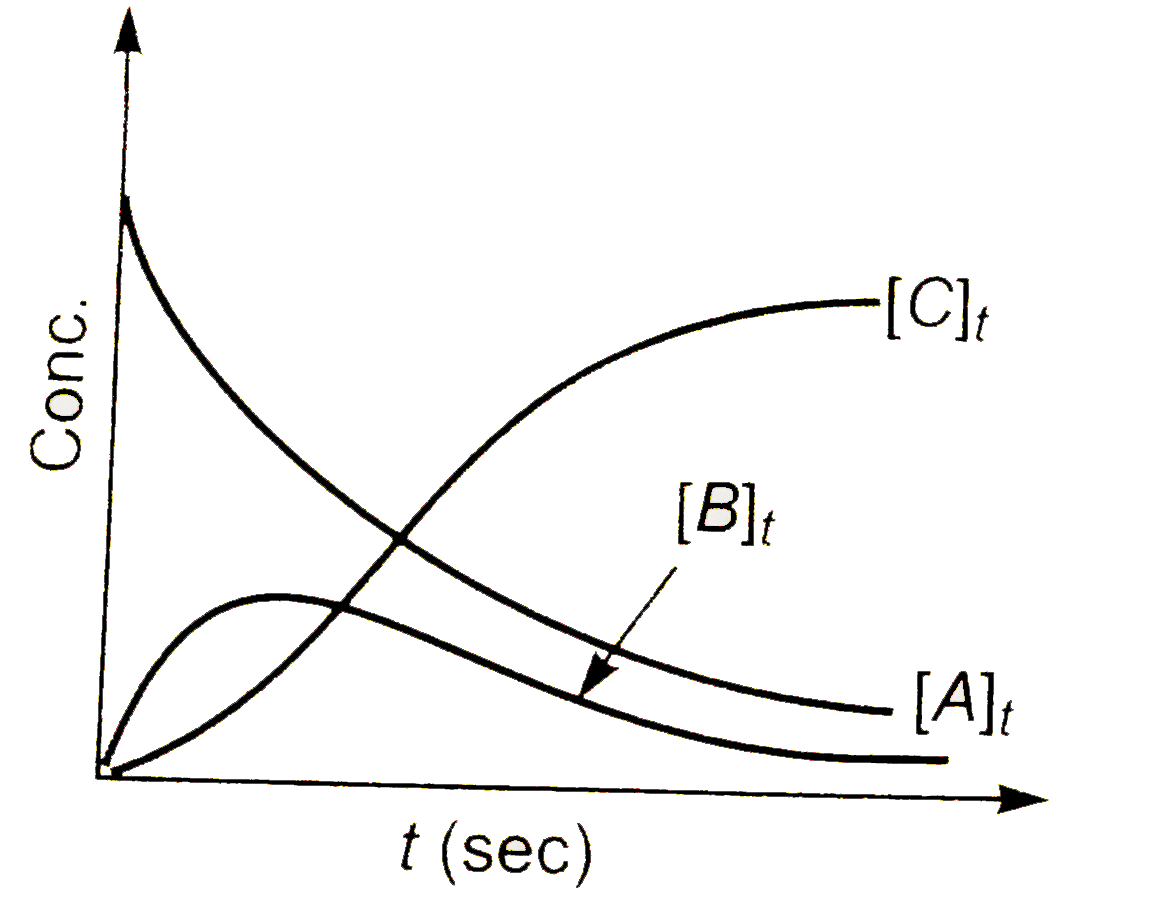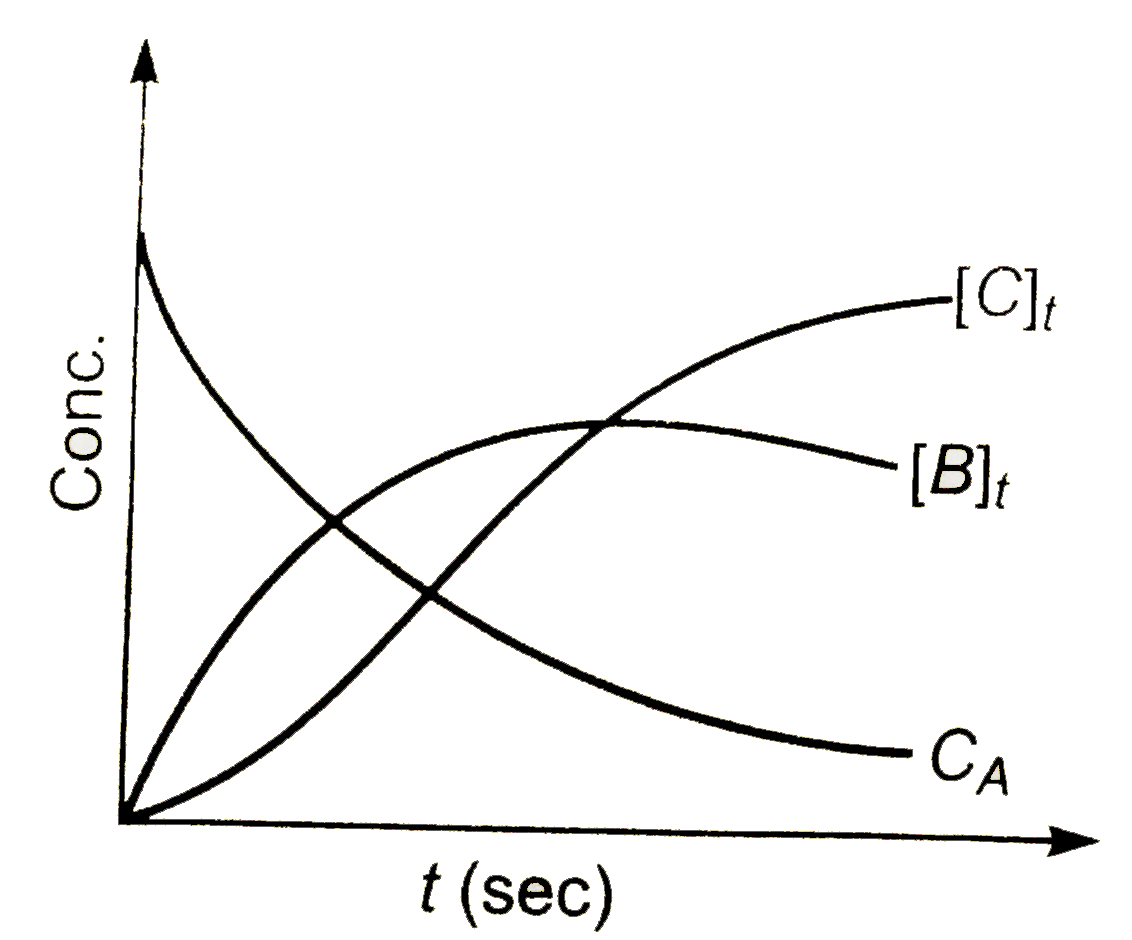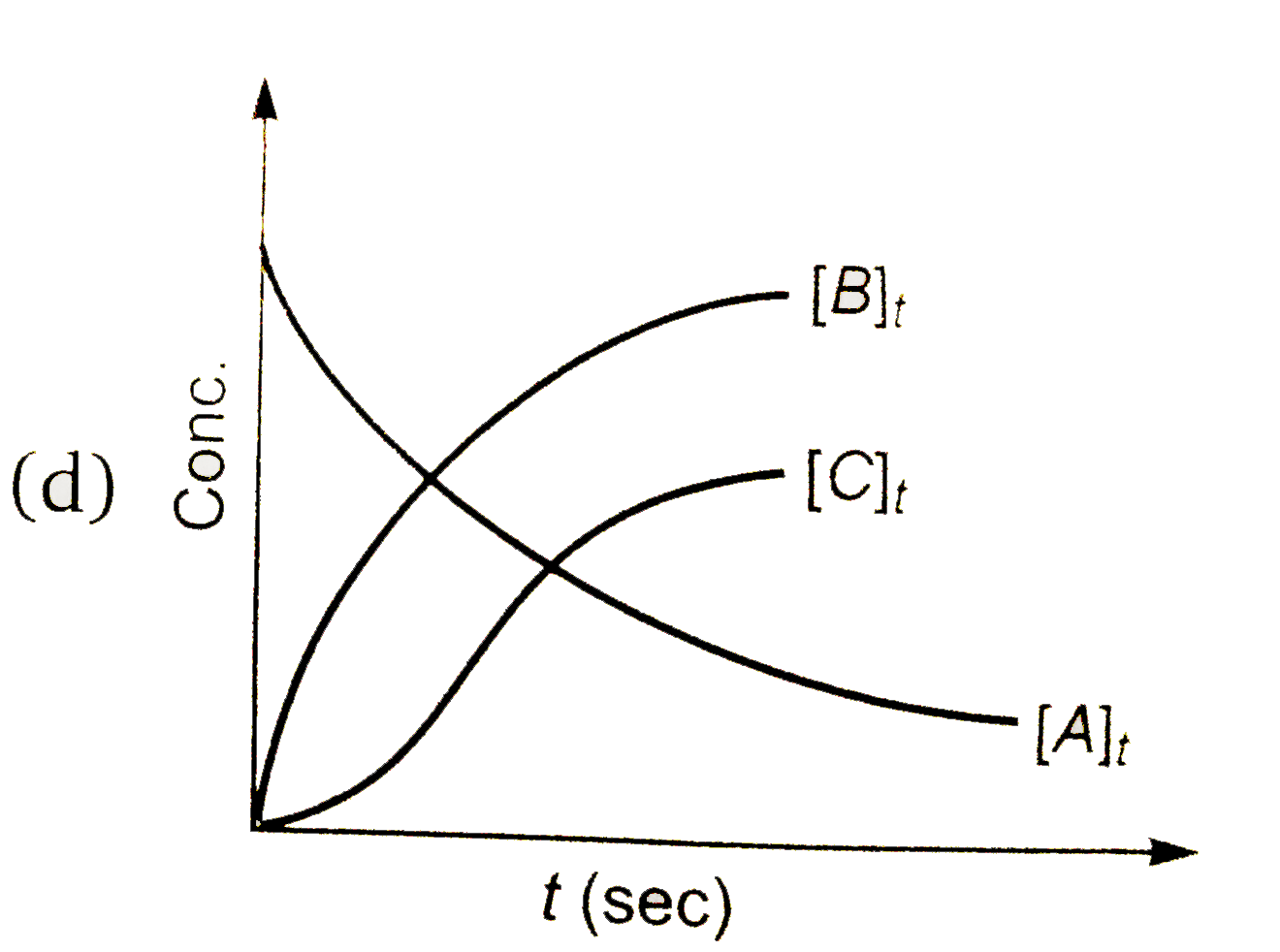A compound A dissociates by two parallel first order paths at certain temperature
A(g)k1(−1min)−−−−−−→2B(g) k1=6.93×10−3−1min
A(g)k1(−1min)−−−−−−→C(g) k2=6.93×10−3−1min
The reaction is started with 1 mole of pure 'A' litre closed container with initial pressure 2 atm. What is the pressure (in atm) developed in container after 50 minutes from start of experiment?Solution in Punjabi
1.25
0.75
1.50
2.50
The correct Answer is:D
Step by step video & image solution for A compound A dissociates by two parallel first order paths at certain temperature A(g)overset(k_(1)(min^(-1)))to2B(g)" " k_(1)=6.93xx10^(-3)min^(-1) A(g)overset(k_(1)(min^(-1)))toC(g)" " k_(2)=6.93xx10^(-3)min^(-1) The reaction is started with 1 mole of pure 'A' litre closed container with initial pressure 2 atm. What is the pressure (in atm) developed in container after 50 minutes from start of experiment? by Chemistry experts to help you in doubts & scoring excellent marks in Class 12 exams.
Topper's Solved these Questions
- BOOK - NARENDRA AWASTHICHAPTER - CHEMICAL KINETIC & NUCLEAR CHEMISTRYEXERCISE - Level 2 (Q.33 To Q.35)2videos
CHEMICAL KINETIC & NUCLEAR CHEMISTRY
- BOOK - NARENDRA AWASTHICHAPTER - CHEMICAL KINETIC & NUCLEAR CHEMISTRYEXERCISE - Level 3 - Passage1videos
CHEMICAL KINETIC & NUCLEAR CHEMISTRY
- BOOK - NARENDRA AWASTHICHAPTER - CHEMICAL KINETIC & NUCLEAR CHEMISTRYEXERCISE - Level 21videos
CHEMICAL KINETIC & NUCLEAR CHEMISTRY
- BOOK - NARENDRA AWASTHICHAPTER - SURFACE CHEMISTRYEXERCISE - Level -21videos
SURFACE CHEMISTRY
Similar Questions
In a sample of wood, the reading of a counter is 32 dpm and in a fresh sample of tree it is 122dpm . Due to error counter gives the reading 2 dpm in absence of .14C . Half life of .14C is 5770 years .
The approximate age (in years) of wood sample is :02:43View SolutionTwo consecutive irreversible first order reactions can be represented by
Ak1−−→Bk2−−→C
The rate equation for A is readily interated to obtain
[A]t=[A]0.e−k1t , and [B]t=k1[A]0k2−k1[e−k1(t)−e−k2(t)]
When k1=1s−1 and k2=500s−1 , select most appropriate graph
a) b)
b) 
c) d)
d)  02:45View Solution
02:45View SolutionThe forward rate constant for the elementary reversible gaseous reaction
C2H6<⇒2CH3is1.57×10−3s−1at100K
What is the rate constant for the backward reaction at this temperature if 10−4 moles of CH3 and 10 moles of C2H6 are present in a 10 litre vessel at equilibrium .
a) 1.57×109Lmole−1s−1
b) 1.57×1010Lmole−1s−1
c) 1.57×1011Lmole−1s−1
d) 1.57×107Lmole−1s−1View Solutionfor the graph below, select correct order of temperture ?
 View Solution
View SolutionConsider the following equilibrium: SO_(2)(g)+(1)/(2)O_(2)(g)overset(K_(1))(hArr)SO_(3)(g), 2SO_(3)(g)overset(K_(2))(hArr) What is the relation between K_(1) and K_(2) ?
04:31View SolutionConsider a reaction A(g) rarr 3B(g) + 2C(g) with rate constant is 1.386 xx 10^(-2) "min"^(-1) in a non-rigid closed container starting with 2 moles of A in 12.5 L vessel initially, if reaction is allowed to take place at constant pressure and at 298 K the conc. of after 100 min is
02:20View SolutionA compound A dissociates by two parallel first order paths at certain temperature A(g)overset(k_(1)(min^(-1)))to2B(g)" " k_(1)=6.93xx10^(-3)min^(-1) A(g)overset(k_(1)(min^(-1)))toC(g)" " k_(2)=6.93xx10^(-3)min^(-1) The reaction is started with 1 mole of pure 'A' litre closed container with initial pressure 2 atm. What is the pressure (in atm) developed in container after 50 minutes from start of experiment?
02:52View SolutionFor a reaction,
SO2(g)+1/2O2(g)→SO3(g) if Kp=1.7×1012 at 20∘C and 1 atm pressure , then value of Kc isView SolutionConsider the following reversible chemical reactions :
A2(g)+B2(g)K1⇐⇒2AB(g)....(1)
6AB(g)K2⇐⇒3A2(g)+3B2(g).....(2)
The relation between K1 and K2 is :View SolutionFor a consecutive reaction R_(1)overset(k_(1))to R_(2)overset(k_(2))to R_(3) , if initial concentration of R_(1) is 100 M and k_(1):k_(2)=1:0.15 , calculate the value of t_("max")("Given "k_(1)=4.0xx10^(-2)"min"^(-1)).
04:12View SolutionConsider a reaction 3A(g)rarr4B(g)+C(g) , starting with pure A having pressure (3)/(5) atm, the pressure after 10 min. reaches to 1 atm. Calculate the value of rate of disappearance of A at initial instant.
05:16View SolutionStudy the parallel first order reaction: Aoverset(k_(1))to2B 2Aoverset(k_(2))to3C At any time (tne0) the products contain 40% B and 60% C, by moles .If the overall rate constant for the reaction of A is 0.09 min^(-1) ,then value of K_(1) is :
06:59View SolutionFor the reversible reaction : Aounderset(K_(2))overset(K_(1))hArrB ,k_(1)=0.02" min"^(-1) and k_(2)=0.03"min^(-1) . The reaction is stated with A only .If the half life of such reaction is defined as the time in which half of the equilibrium amount of B is formed , then , what is the half life of reaction ?
04:25View SolutionThe rate constant and half-life of a first order reaction at temperature T1 are k1min−1andx1min , respectively and those at temperature T2 are k2min−1andx2 min , respectively. If T2>T1 , which is greater , x1 or, x2 ?
04:20View SolutionA compound A dissociate by two parallel first order paths at certain temperature
A(g)k1(min−1)→2B(g)k1=6.93×10−3min−1
A(g)k2(min−1)→C(g)k2=6.93×10−3min−1
If reaction started with pure 'A' with 1 mole of A in 1 litre closed container with initial pressure (in atm) developed in container after 50 minutes from start of experiment?03:28View Solution

